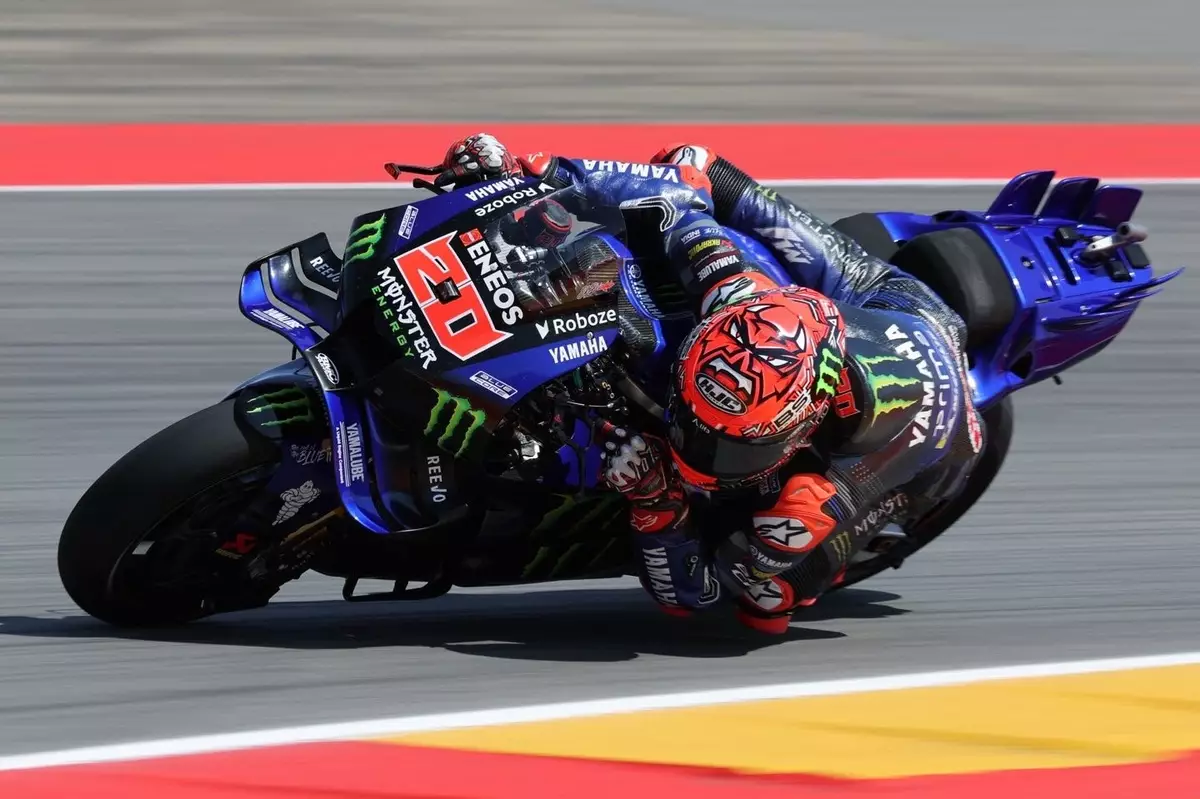In the realm of MotoGP, where every millisecond counts and every turn can make or break a race, the grip of a motorcycle on the tarmac is crucial. The recent performances at the Aragon circuit have starkly highlighted the grip deficiencies faced by Yamaha’s YZR-M1, with none other than the talented Fabio Quartararo at the helm. As riders maneuver through the technical intricacies of the track, the importance of power delivery and stability cannot be understated. At Aragon, Yamaha’s shortcomings became glaringly obvious, exposing not just bike performance, but also the psychological toll it takes on the riders.
A Flickering Flame of Hope
The low-grip conditions of Aragon were seen as a potential disaster for Quartararo, whose past victories have been underpinned by superior bike handling and traction. The Friday practice session turned into a nightmare rather than a potential platform for success. Quartararo’s Yamaha displayed a concerning tendency to snap and jump after every corner, leaving him to grapple not only with the performance of his machine but also the creeping frustration that comes with it. The Frenchman’s experience was further marred by a startling statistic: his bike was the slowest through the speed trap, trailing behind rivals with nearly a 10 kph deficit. Such performance discrepancies are more than mere numbers; they signify lost opportunities and mounting pressure.
The Emotional Rollercoaster of Racing
What sets Quartararo apart from many other riders is his ability to oscillate between frustration and humor. Following the tumultuous practice session, he transitioned from alarming disappointment to a light-hearted quip, describing his struggles as almost securing a pole position… at the back of the grid. This duality of emotions reflects the inherent frustrations of professional racing—a landscape where moments of despair can quickly shift to fleeting laughter. Nevertheless, upon deeper reflection, it is clear that these humorous retorts mask an underlying vulnerability that could rattle even the most seasoned racers.
An Eloquent Struggle for Answers
Quartararo’s candid opinions during the post-session debrief are crucial for understanding the technical challenges that Yamaha currently faces. He expressed puzzlement at the bike’s behavior related to electronics, noting a significant lack of comprehension regarding how tire changes can drastically alter performance. His assertion that the set-up was sound, even amidst the chaos, points to a deeper issue, one that is found at the intersection of hardware and technology. In the high-stakes world of MotoGP, losing grip and traction can send shockwaves through a rider’s confidence—a sentiment clearly echoed in Quartararo’s analysis.
Leadership in Crisis
Yamaha Team Director Massimo Meregalli mirrored the sentiments of his top rider, voicing disappointment over the collective struggles faced by Quartararo and his teammate Alex Rins. Highlighting rear grip issues, Meregalli’s observations reveal a broader concern that transcends individual performance—it speaks to the core challenges within the Yamaha team. Their experiences at Aragon—where both riders ended the day languishing at the back of the standings—signify a pattern that necessitates urgent rectification. As temperatures increased on the track, the grip conditions worsened, emphasizing the need for strategic adaptations in response to environmental variables.
Hope for Tomorrow
As Yamaha navigates through this tempest, the imperative to refine their bike’s setup and improve rear grip capabilities takes center stage. The significant temperature variations indicative of racing dynamics illustrate the complexities teams must address with utmost urgency. Quartararo’s yearning for a “golden fix” encapsulates the collective hope of Yamaha, propelling them forward in their quest for competitive resurgence.
MotoGP isn’t just about speed; it’s about resilience. The mantle of improvement lies not solely on the rider’s shoulders but must also be embraced by the entire Yamaha team. As they gear up for future races, their ability to innovate under pressure will ultimately redefine their path and possibly inspire a renaissance within the team’s storied history.

